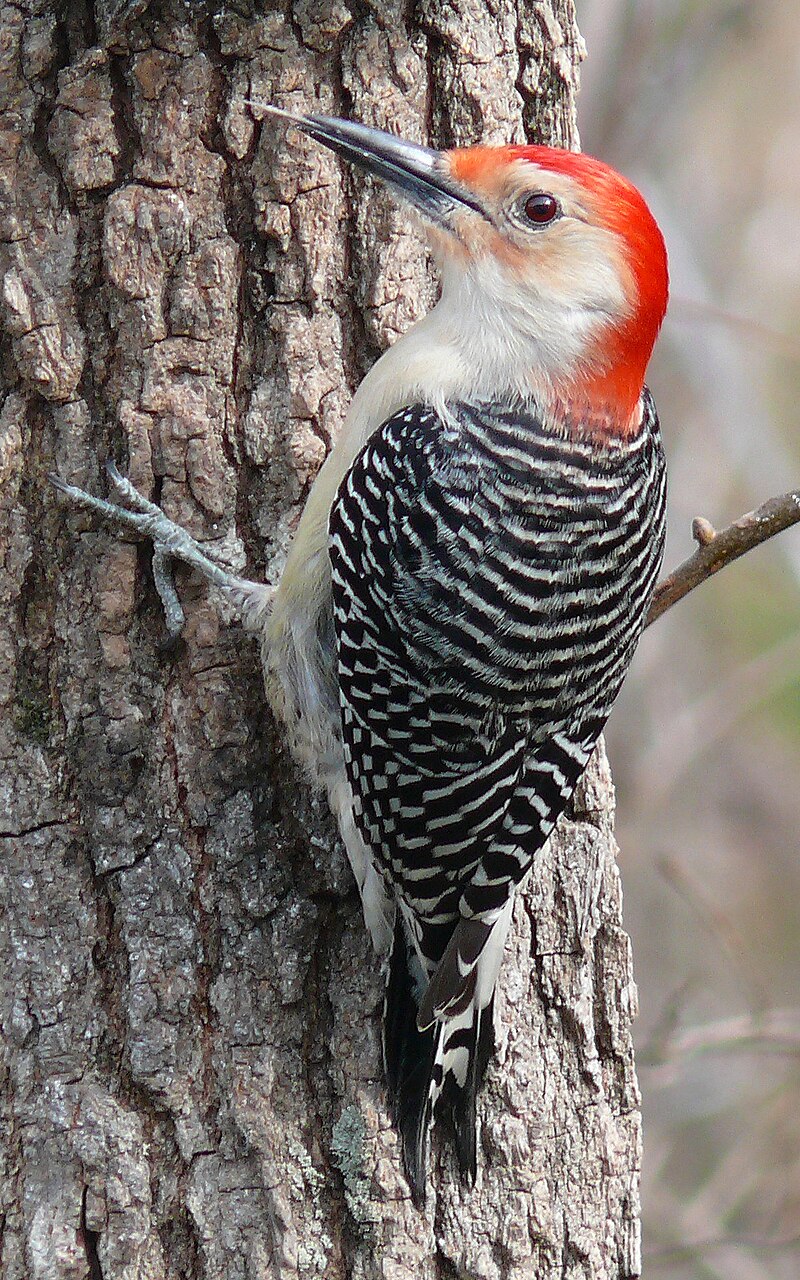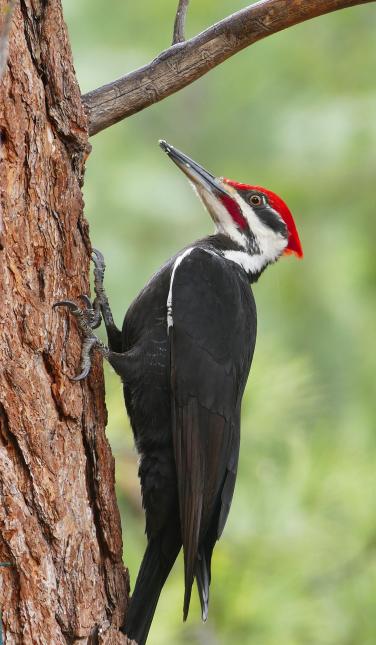Woodpeckers: A Comprehensive Overview to Understanding These One-of-a-kind Birds
Woodpeckers, with their distinctive habits and physical characteristics, have actually long mesmerized the curiosity of ornithologists and nature enthusiasts alike. From their rhythmic drumming echoing with the woods to their impressive adjustments for scaling tree trunks with convenience, these birds provide an interesting study in avian biology. What really sets woodpeckers apart is not simply their striking appearance yet also their crucial role in preserving the fragile balance of environments. As we explore the detailed anatomy, diverse types, and environmental significance of woodpeckers, a deeper recognition for these unique birds and the enigmas they hold unravels.

Woodpeckers' Drumming Habits
Woodpeckers display a rhythmic and specific drumming habits that serves various essential features in their every day lives. This actions is mainly related to interaction, region defense, and foraging. The unique drumming sound is created by the rapid pecking of their beaks versus tough surfaces such as tree trunks, branches, or also metal items.
Communication is an essential aspect of woodpecker habits, and drumming plays a substantial role in this process. Woodpeckers make use of drumming to establish their visibility, attract mates, and maintain call with their partners and children. The regularity, strength, and period of drumming sequences convey details messages to other woodpeckers in the location.
Along with interaction, woodpeckers use drumming actions for region defense. Woodpeckers in Florida. The loud and repeated drumming functions as a warning to prospective trespassers, indicating that the area is currently asserted. By developing their territory via drumming, woodpeckers lower the probability of disputes over important resources such as food and nesting sites
Moreover, woodpeckers also utilize drumming as a foraging technique. The rhythmic pecking assists them find bugs concealing under the bark of trees by producing resonances that interfere with the victim's cover-up. This behavior showcases the flexibility and resourcefulness of woodpeckers in using their drumming skills for multiple essential purposes.
Distinct Adaptations for Tree Climbing
Having actually mastered the art of drumming to communicate, protect territory, and forage, woodpeckers have actually evolved one-of-a-kind adaptations that facilitate their exceptional climbing abilities in their arboreal environments. Woodpeckers have zygodactyl feet, with two toes pointing onward and 2 toes directing backward. These tail plumes give stability and equilibrium, making it possible for woodpeckers to steer up tree trunks with precision and agility.
Additionally, woodpeckers have powerful neck muscles and a special skull structure that help in their climbing up capabilities. Their strong neck muscle mass enable them to quickly peck at tree bark without experiencing whiplash, while their thick skull and small brain function as shock absorbers, protecting them from the impact of duplicated drumming. These adjustments jointly make it possible for woodpeckers to browse the upright globe of trees with effectiveness and elegance.

Role of Woodpeckers in Ecological Communities
Playing a critical duty in woodland ecological communities, woodpeckers add considerably to the equilibrium and health and wellness of their habitats with their unique behaviors and communications with other varieties. One of the essential environmental functions of woodpeckers is their duty in managing insect populations. By foraging for pests under the bark of trees, woodpeckers help regulate bug populaces, protecting against episodes that can hurt the total health of the forest. Furthermore, woodpeckers create tooth cavities in trees that work as critical nesting sites for a range of other Discover More Here bird varieties, advertising biodiversity within the community.
Moreover, the drumming and articulations of woodpeckers play a vital function in interaction and region establishment. These sounds not only offer to draw in companions but also assist define boundaries in between various woodpecker territories, reducing problems and promoting a harmonious conjunction within the woodland community. On the whole, the visibility of woodpeckers in woodland ecosystems highlights their importance as keystone types, affecting the characteristics and working of these environments in complex ways.
Makeup: Specialized Beaks and Feet
In the elaborate internet of forest communities, the specialized beaks and feet of woodpeckers are necessary adjustments that enable them to fulfill their important ecological duties. Woodpeckers have special anatomical functions that are specifically made to help them in their foraging and nesting behaviors.
The most distinguishing characteristic of woodpeckers is their strong, chisel-shaped beaks. These beaks are flawlessly adjusted for exploration right into timber to uncover bugs, larvae, and sap covert underneath the bark of trees. The strong muscular tissues and durable framework of their beaks allow woodpeckers to peck at a rate of approximately 20 times per second without triggering damage to their heads.
Furthermore, woodpeckers have specialized feet that help in their acrobatic climbing capabilities. Their feet have two toes pointing forward and 2 toes aiming backwards, supplying a strong grip on upright surfaces (Woodpeckers in Florida). This distinct foot setup, in addition to rigid tail feathers that act as a helpful prop, permits woodpeckers to hold on to tree trunks and branches effortlessly while they browse for food or dig deep into nesting tooth cavities
Woodpecker Variety Diversity
Woodpeckers are a diverse team of birds located across different environments worldwide, with over 200 recognized species exhibiting adaptations to different settings. Woodpeckers have progressed to populate an array of environments, from forests and timberlands to grasslands and deserts, each providing one-of-a-kind obstacles that have affected the advancement of distinctive woodpecker varieties.
These adjustments make it possible for woodpeckers to forage effectively in their corresponding environments, lowering competitors among varieties and advertising niche differentiation. Furthermore, geographical isolation and historic variables have actually played a function click this site in shaping the circulation and variety of woodpecker species, leading to the broad selection of specialized adjustments seen in these interesting birds.

Final Thought
In final thought, woodpeckers are fascinating birds that exhibit special drumming habits, specialized adaptations for tree climbing, and play important roles in ecological communities. Their composition, including specialized beaks and feet, enables them to flourish in their environment. i was reading this With a diverse array of woodpecker types found worldwide, these birds are necessary for keeping the health and wellness and balance of forests and timberlands. Recognizing and valuing the details of woodpeckers can offer useful understandings right into the natural world.